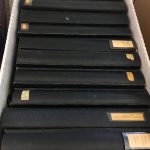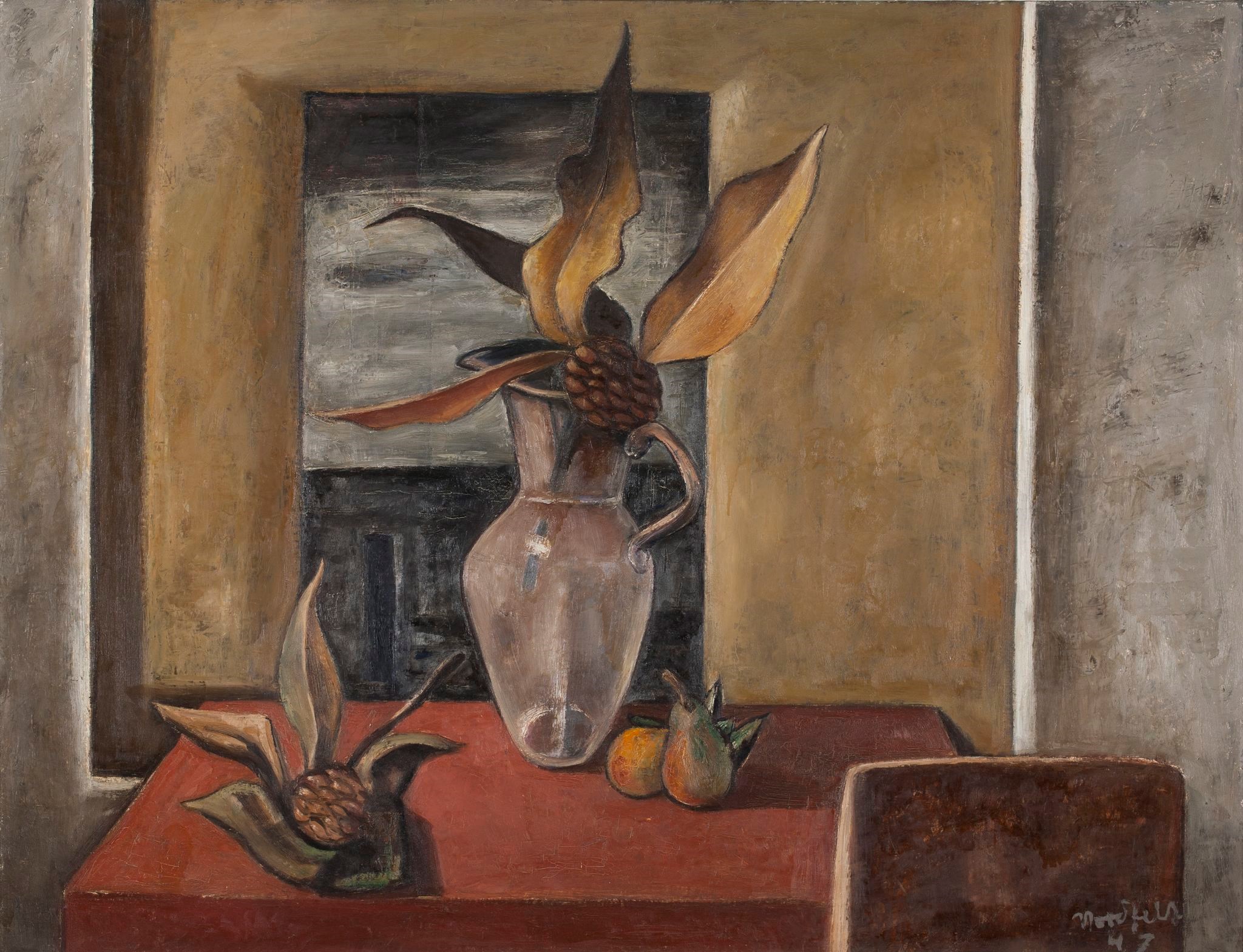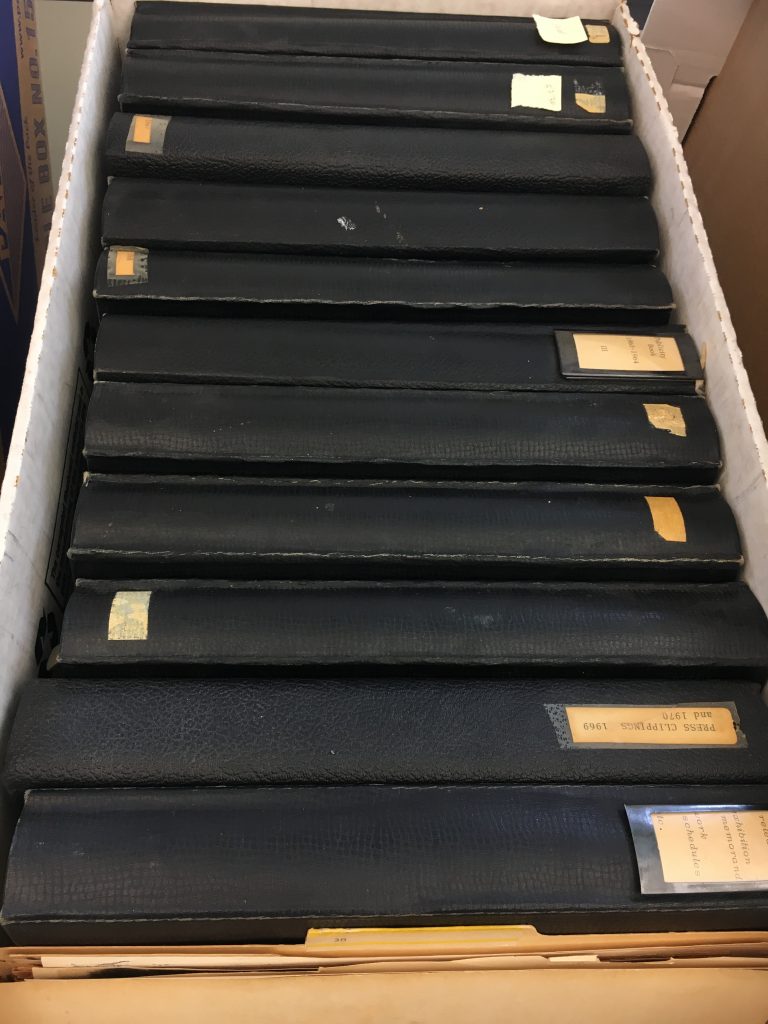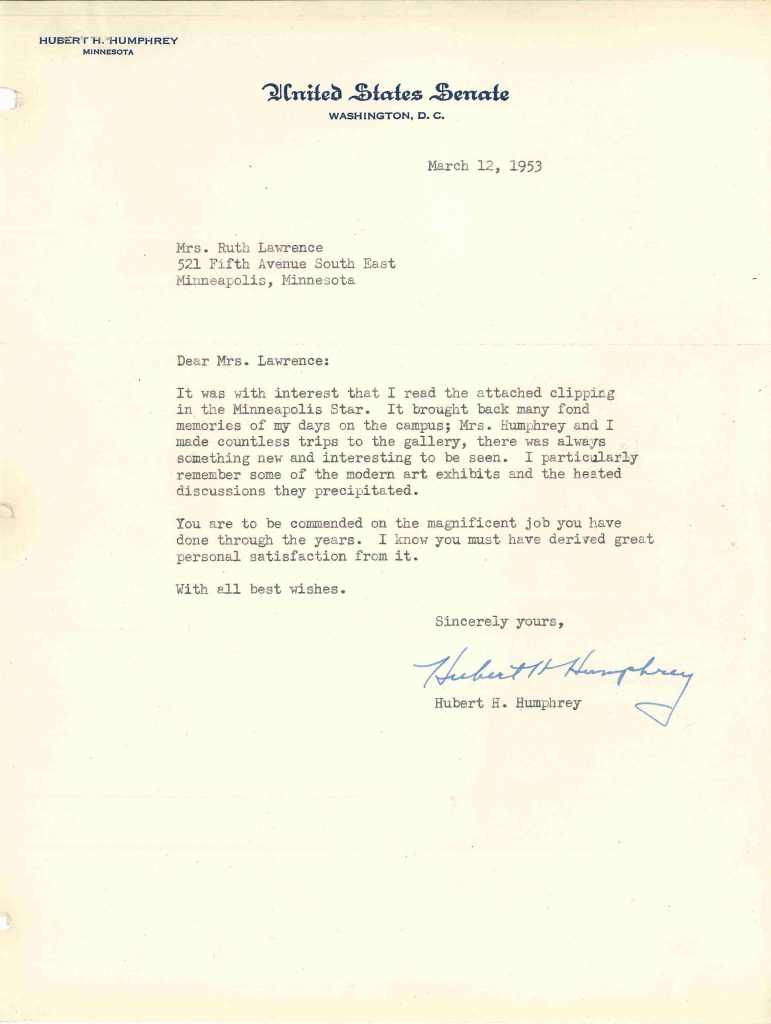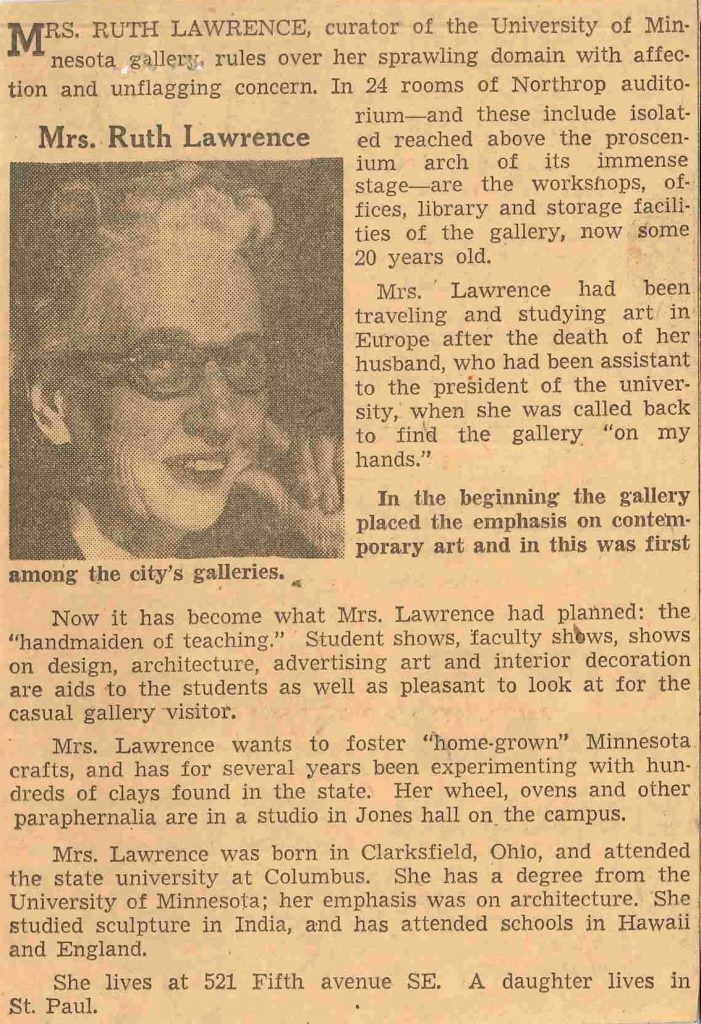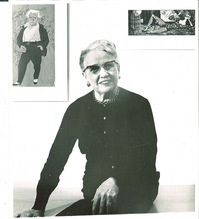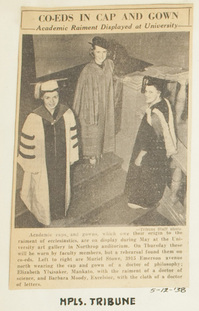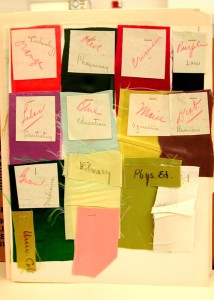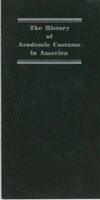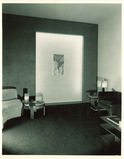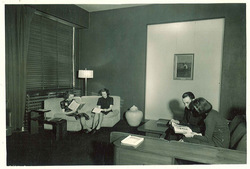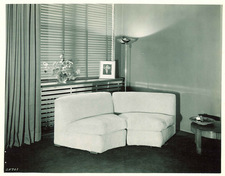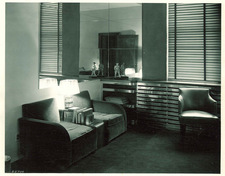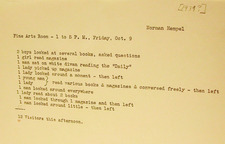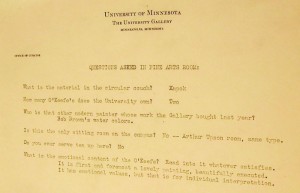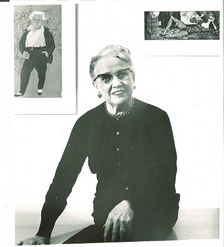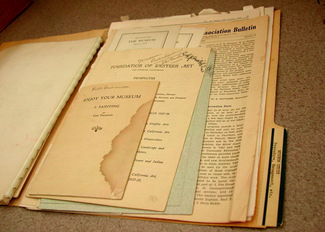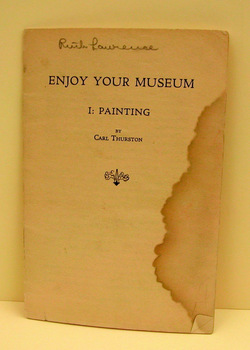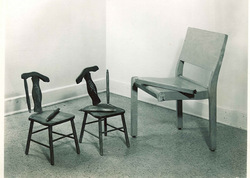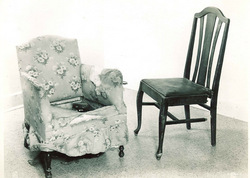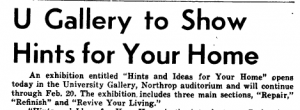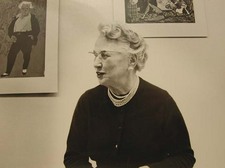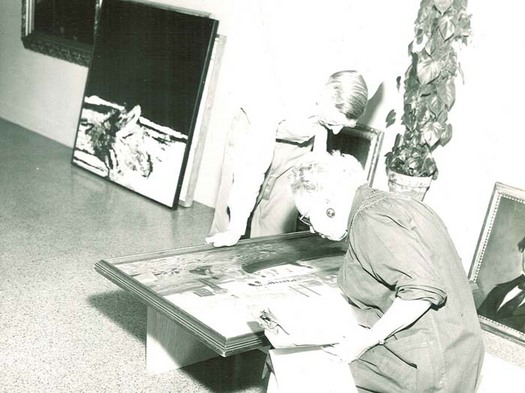The allure of the archive is found not only in the rich original evidence of the past that it contains, but is also demonstrated by what the archive may lack. The nature of the organization of records and the proclivity of the record creator determine the composition of the collection. In other words, a single archival collection may not contain all of the information or materials created on a certain person, event, or organization – it may not offer the whole story. This aspect of the archive sends the researcher on an unending hunt for information, each turn determined by obscure clues found amidst some of the most unassuming records.
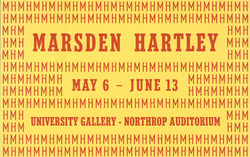 An example of this is found with the 1952 exhibition of the works of Marsden Hartley, held at the University Gallery from May 5 to June 13 (and promoted by the poster at left). To learn more about the exhibit it would seem only natural to a researcher to consult the exhibition record from the organization that held the exhibition. The exhibition record is contained in Box 4 of the WAM archival collection at the University Archives. Expecting a wealth of information – an exhibition checklist, opening invitation, catalogue, correspondence, photographs of installation, etc., after consulting the record, I realized that my sights were set too high. While many exhibition record folders contain all of the aforementioned items and more, the folder titled, “Hartley Show, 1952” does not. The contents of this folder consist simply of an exhibition poster and a hand written note with the following text,
An example of this is found with the 1952 exhibition of the works of Marsden Hartley, held at the University Gallery from May 5 to June 13 (and promoted by the poster at left). To learn more about the exhibit it would seem only natural to a researcher to consult the exhibition record from the organization that held the exhibition. The exhibition record is contained in Box 4 of the WAM archival collection at the University Archives. Expecting a wealth of information – an exhibition checklist, opening invitation, catalogue, correspondence, photographs of installation, etc., after consulting the record, I realized that my sights were set too high. While many exhibition record folders contain all of the aforementioned items and more, the folder titled, “Hartley Show, 1952” does not. The contents of this folder consist simply of an exhibition poster and a hand written note with the following text,
Hartley Show Retrospective May 5 – June 13. About 160 items shown – Ptgs. Drawings prints and pastels all drawn from the Hudson Walker Collection here on loan
in the gallery – a fine catalog was prepared by Elizabeth McCausland printed by the U. Press – A group from these will be circulated on west coast – south and in eastern museums.
Though not much to work with, this description did provide a clue: the name Elizabeth McCausland.
Naturally, I turned to the Digital Conservancy to see if any reference to this exhibit and to McCausland occurred in the historical resources preserved and digitized by the University Libraries. Sure enough, a University of Minnesota News Service press release from April 25, 1952 titled, “Marsden Hartley, American Artist, ‘U’ Book Subject” appeared in my search. (Page 91)
The Hartley exhibit opened on May 5 in conjunction with the release of a publication of a biography of the artist written by Elizabeth McCausland and published by the University Press. The exhibit included over 150 prints, watercolors, and drawings created by Hartley.
Further research on McCausland lead me to an archival collection of her personal and professional papers, which are preserved at the Archives of American Art. Portions of the Elizabeth McCausland papers, 1838-1980, bulk 1920-1960 were digitized and made available for research (thank you!). The series, “Correspondence and General Files, 1900-1964, bulk 1950-1964” includes a section of pertinent interest: Box 17, folders 40-51, which contain correspondence with staff of the University Gallery, University Vice President Malcolm Willey, the University Press, and Chairman H. Harvard Arnason of the Department of Art regarding the research for and publication of McCausland’s biography of Marsden Hartley. Additional portions of this series also contain correspondence with Hudson Walker, who owned the Hartley works, but had placed them on loan to the University in 1950.
A February 17, 1951 correspondence from McCausland to Ruth Lawrence, Gallery Director, informed Lawrence of McCausland’s “imminent descent on the Hartleys now with you.” She outlined that she intended to spend 2-3 weeks researching Walker’s Hartley paintings. She indicated the importance of her study, “facts which do not exist anywhere else may often be translated from obscure hieroglyphics on the back of pictures. I am becoming a cryptographer of Stieglitz inscriptions.” (Hartley’s work was previously exhibited at Alfred Stieglitz’s gallery in New York.)
In Lawrence’s February 21, 1951 response to McCausland, Lawrence not only welcomed her to the Gallery, but also offered to her the use of her apartment, as Lawrence would be away from the Gallery on an exhibition collecting trip during the time McCausland would be in residence in the Gallery.
Additional letters in folder #44,”University Gallery, 1951-1952, 1957,” in box 17 of McCausland’s Correspondence and General Files outline McCausland’s research, and consist of detailed requests to Betty Maurstad, the Gallery staff member in charge of “collections,” for specifics on Hartley’s paintings. In addition to corresponding about the details of the Hartley publication and exhibition, there are also personal comments between McCausland, Maurstad, and Lawrence regarding pets, news of the day, and family hardships.
The correspondence also reveals that the publication of the Hartley book was delayed by the University Press, and that the exhibition had to be delayed as well.
Read through the additional letters in the University Gallery folder, or browse the contents of folders of correspondence with H. Harvard Arnason (Image 42-43), a contract with the University of Minnesota, business with the University Press, and personal correspondence with University Vice President Malcolm Willey to research the alluring archival material that document the 1952 exhibition of the works of Marsden Hartley at the University Gallery.
